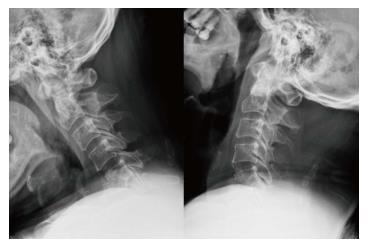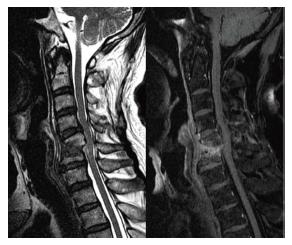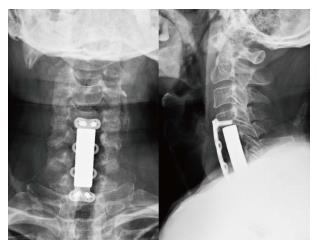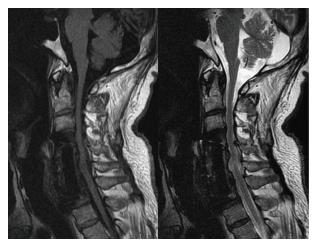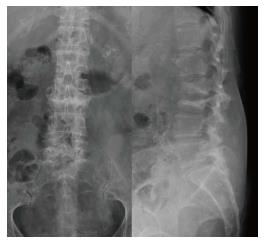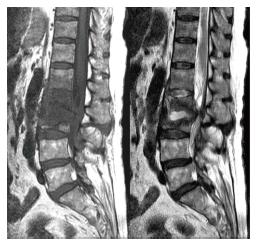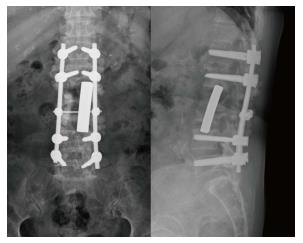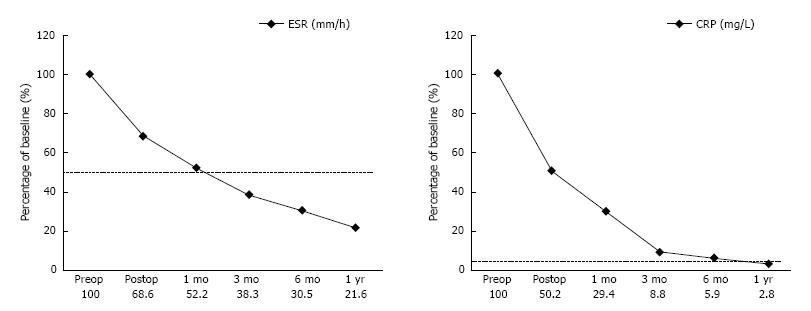Copyright
©The Author(s) 2017.
World J Orthop. Sep 18, 2017; 8(9): 710-718
Published online Sep 18, 2017. doi: 10.5312/wjo.v8.i9.710
Published online Sep 18, 2017. doi: 10.5312/wjo.v8.i9.710
Figure 1 A 51-year-old man experienced intractable neck pain and neurologic deficit.
Dynamic radiograph showed pathological fractures with kyphotic deformity of 5th and 6th cervical vertebrae.
Figure 2 Sagittal T2-weighted and contrast-enhanced magnetic resonance imaging revealed C5-C6 infectious spondylitis with epidural abscess accumulation and spinal cord compression.
Figure 3 Single-stage anterior radical debridement and tantalum mesh cage implantation followed by supplemental anterior locked plate instrumentation were performed to treat infectious spondylitis and correct kyphotic deformity.
Postoperative radiograph showed better alignment after single-stage anterior surgery for complicated infectious spondylitis.
Figure 4 The follow-up sagittal T1- and T2-weighted magnetic resonance imaging demonstrated good implant position and no evidence of recurrent infection.
Figure 5 A 73-year-old woman with end-stage renal disease sustained severe back pain and intermittent high fever.
Radiograph showed endplate erosion and destruction of the 2nd and 3rd lumbar vertebrae, and loss of lumbar lordotic alignment.
Figure 6 Sagittal T1- and T2-weighted magnetic resonance imaging revealed L2-L3 infectious spondylitis with epidural abscess accumulation.
Figure 7 Single-stage anterior radical debridement and tantalum mesh cage implantation followed by supplemental posterior pedicle screw instrumentation were performed to treat infectious spondylitis and correct kyphotic deformity.
The antibiotic beads were also deposited for infection control. Postoperative radiograph showed better lordotic alignment after single-stage combined anterior-posterior surgery for complicated infectious spondylitis.
Figure 8 Percentage changes in serological values before and after single-stage anterior and/or posterior surgery in patients with complicated infectious spondylitis.
- Citation: Yang SC, Chen HS, Kao YH, Tu YK. Single-stage anterior debridement and reconstruction with tantalum mesh cage for complicated infectious spondylitis. World J Orthop 2017; 8(9): 710-718
- URL: https://www.wjgnet.com/2218-5836/full/v8/i9/710.htm
- DOI: https://dx.doi.org/10.5312/wjo.v8.i9.710









